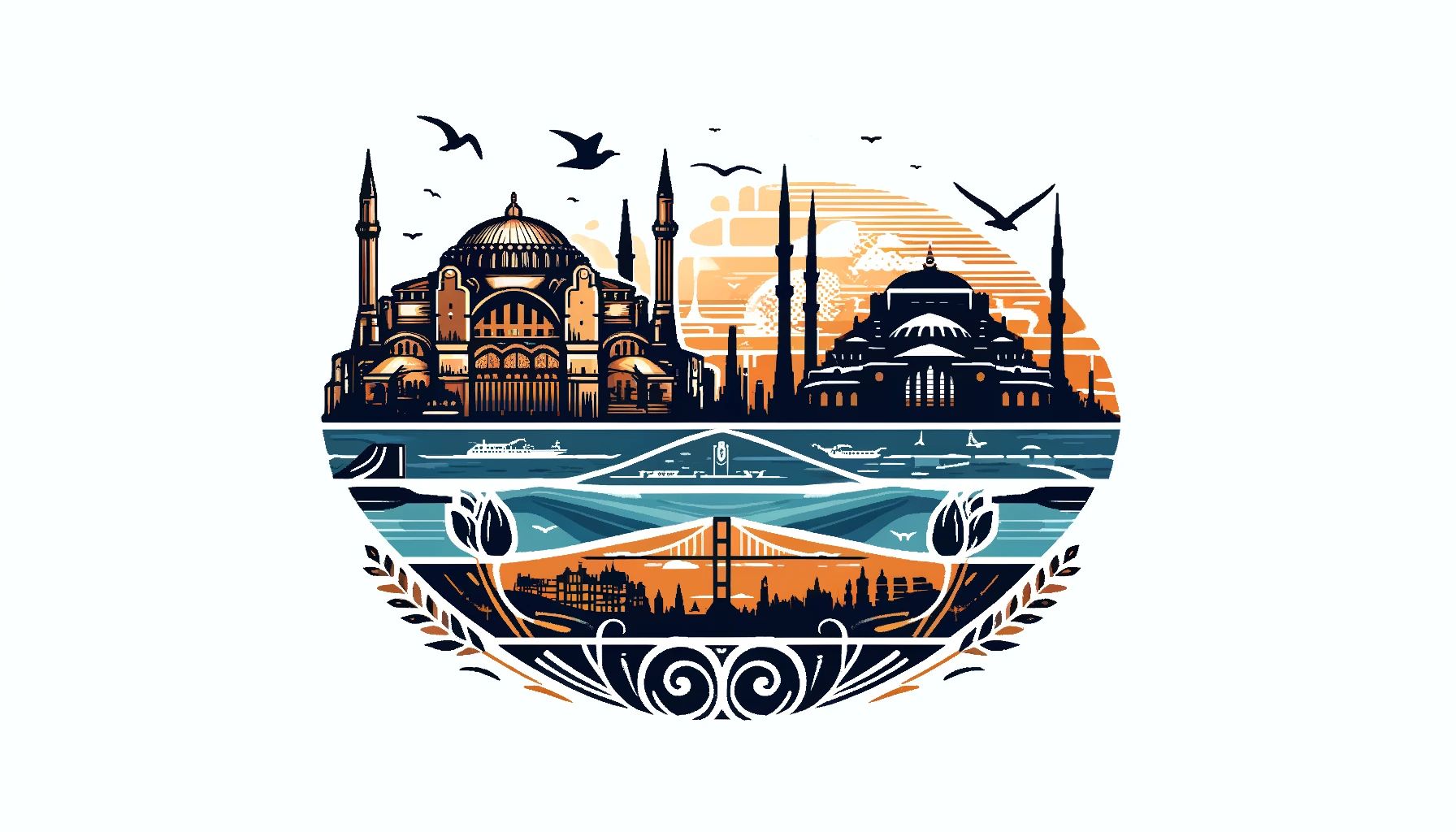Topkapi Palace, a testament to the Ottoman Empire’s grandeur, traces back to the 15th century. Within its walls, stories abound, like the fabled kitchen with 12,000 porcelain pieces, including a Chinese bowl rumored to detect poison. For a glimpse into Istanbul’s rich past, a visit to Topkapi Palace Museum is a must.

Sultan Mehmed II captures Constantinople, setting the stage for the transformation from Hagia Irene to Topkapi Palace.
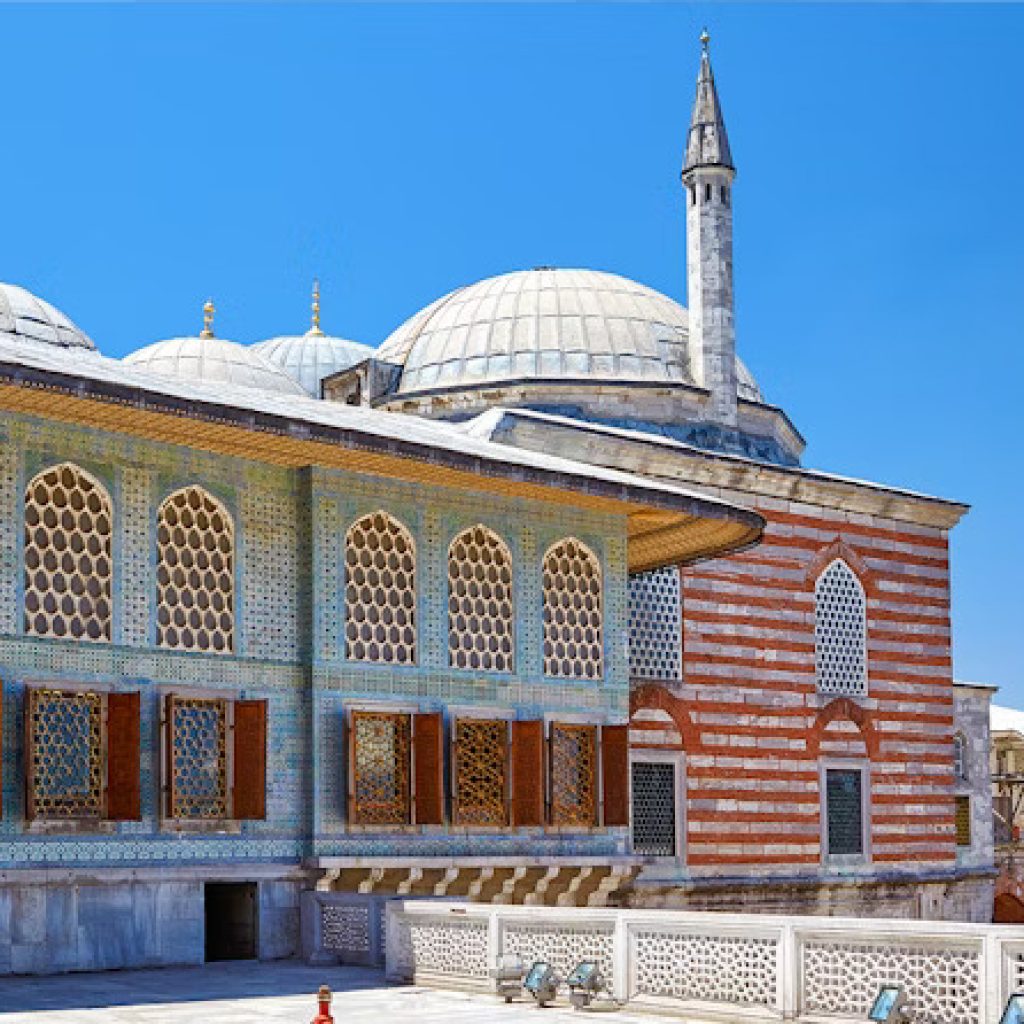
Sultan Mehmed II begins building the 'New Palace,' which becomes Topkapi Palace.
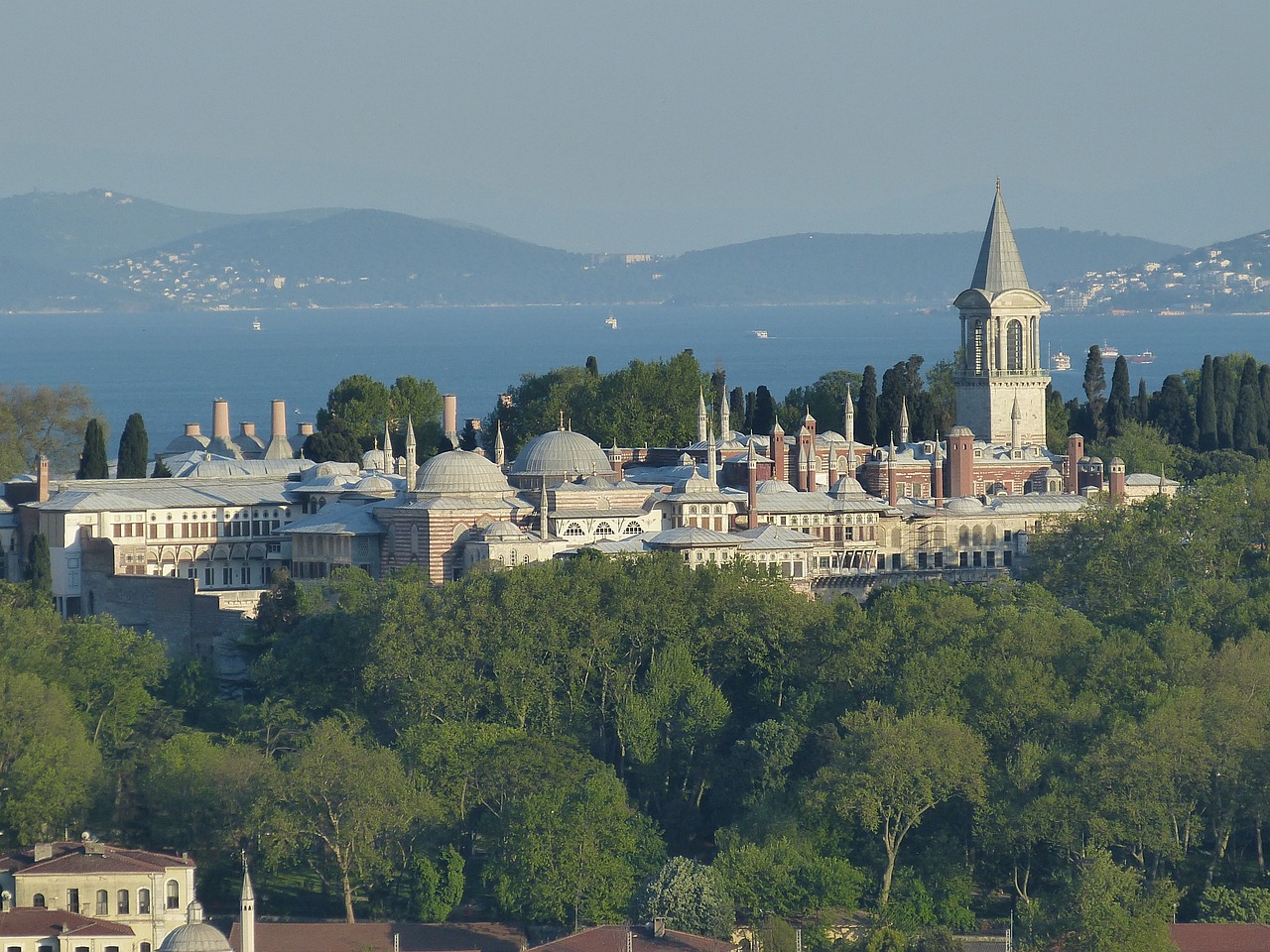
Topkapi Palace construction is completed, becoming the center of Ottoman rule.
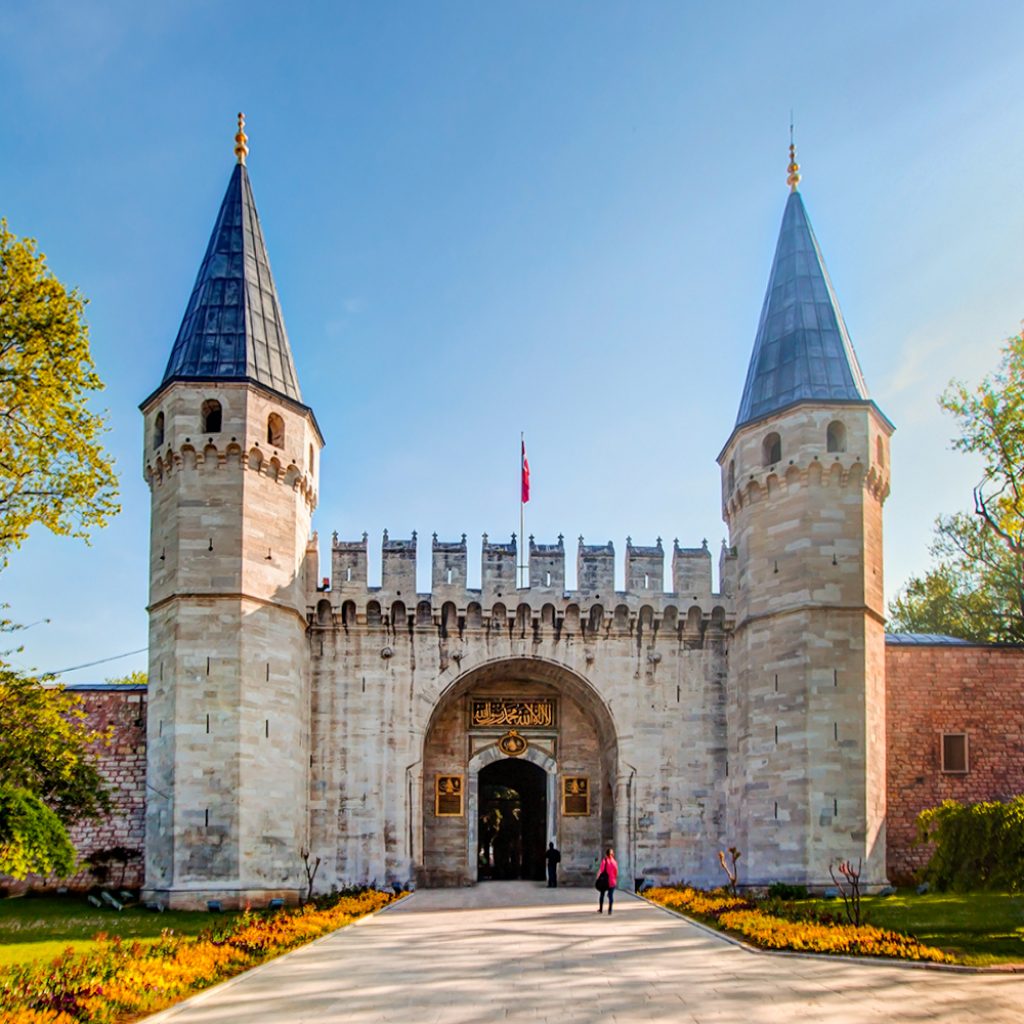
The palace's second gate is finished during Suleyman I's reign.
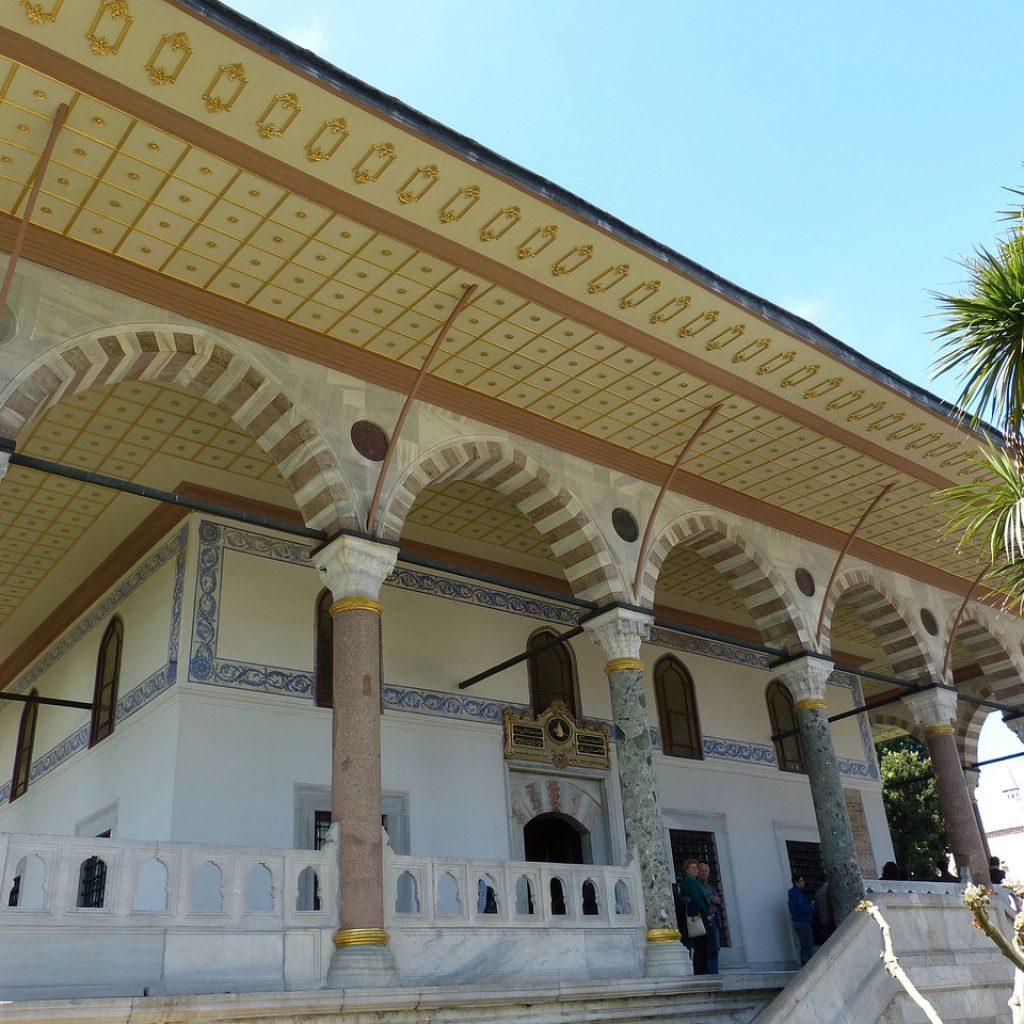
The palace ceased being a royal residence, now used for officers' quarters
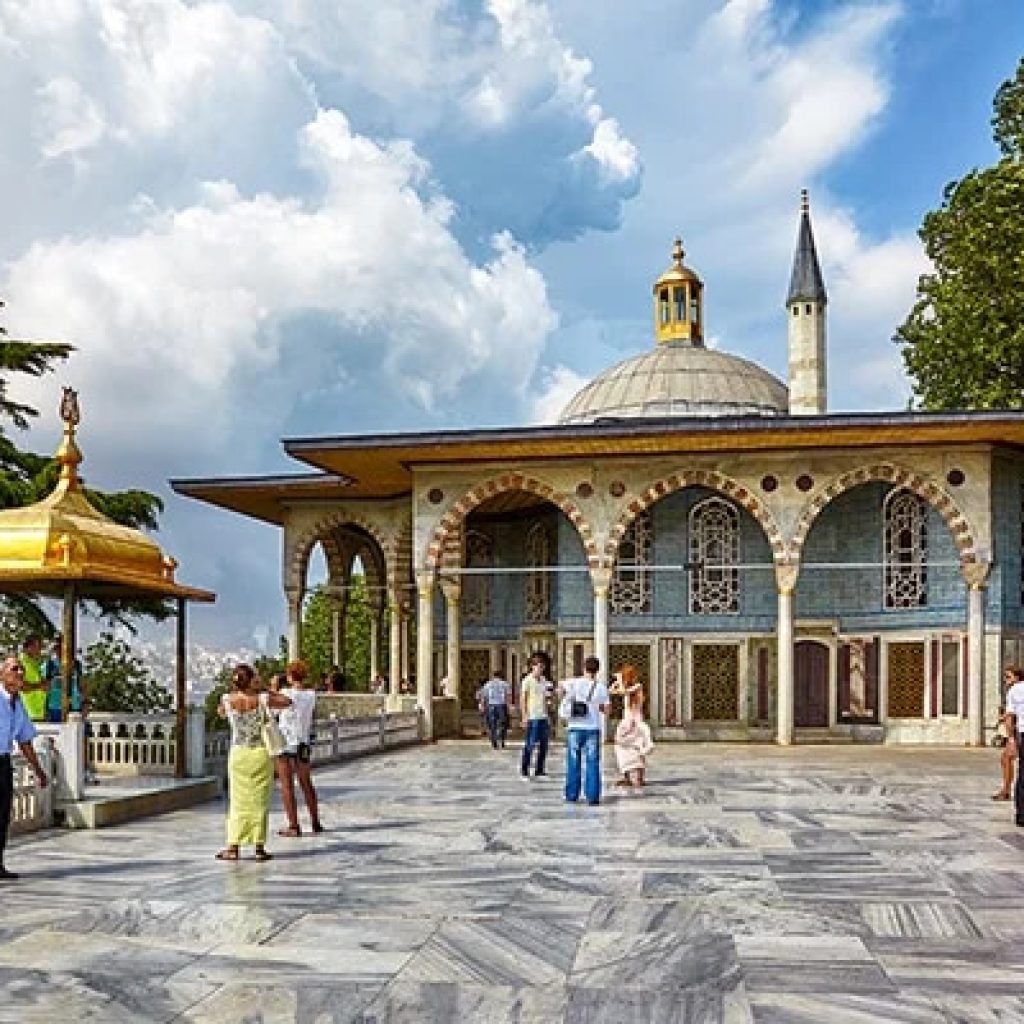
Topkapi Palace becomes a museum, welcoming millions of visitors annually.
In 1453, Sultan Mehmed II led the Ottoman Empire to capture Constantinople, paving the way for the construction of Topkapi Palace. The palace’s foundation was laid in 1459, becoming the heart of Ottoman governance.
Designed by Sultan Mehmed II, Topkapi Palace boasted four courtyards, a Harem, lush gardens, and exquisite pavilions. Mehmed’s vision blended Byzantine, Islamic, and Ottoman architectural influences, creating a unique marvel.
Distinct from European and traditional Islamic architecture, Topkapi Palace’s layout reflected Mehmed II’s innovative approach. Integrating Byzantine remnants and Ottoman aesthetics, it became a symbol of Ottoman grandeur.
Mehmed II enforced strict privacy measures, earning Topkapi Palace the moniker „Palace of Felicity.“ The Kanunname Code mandated imperial seclusion, emphasizing silence within the palace’s inner sanctums, ensuring the Sultan’s solitude.
Under Suleyman the Magnificent’s reign, Topkapi Palace underwent significant expansion between 1520 and 1560. Chief architect Acem Ali oversaw the ambitious project, solidifying the palace’s status as a testament to Ottoman supremacy.
Constructed in the late 16th century, the Harem accommodated over a thousand residents, including concubines, children, and eunuchs. Led by the Valide Sultan, the Harem was meticulously organized, shaping the lives of its inhabitants.
Surrounding Topkapi Palace, Gulhane Park offered imperial respite, while the Fifth Courtyard once housed lavish shoreline structures. Today, only remnants like the Basketmakers‘ Kiosk remain, echoing the palace’s storied past.
Constructed under Sultan Mehmed II’s decree in 1459 and completed in 1465, Topkapi Palace in Istanbul is a masterpiece of Ottoman architecture. Influenced by Ottoman, Persian, and Islamic styles, its design showcases pointed arches, domes, and intricate tilework, crafted by renowned architects such as Alaüddin, Davud Ağa, and Mimar Sinan. This harmonious fusion of diverse influences reflects Turkey’s rich cultural heritage, making Topkapi Palace a symbol of the country’s historical and architectural richness.
Over the centuries, successive rulers contributed to its expansion and renovation, solidifying Topkapi Palace as an enduring symbol of Ottoman grandeur. Today, it stands as a cherished landmark, captivating visitors with its timeless beauty and serving as a testament to Turkey’s cultural and historical significance.
Having undergone extensive renovations in the 16th century, Topkapi Palace Museum now stands as a complex featuring four main courtyards, interconnected galleries, a Harem, and various pavilions and gardens. Since its transformation into a museum in 1924, it houses an impressive collection of artifacts, including rare books, manuscripts, the Holy Relics of the Prophet Muhammad, and iconic items like the Topkapi Dagger and Spoonmaker’s Diamond.
Managed by Turkey’s Ministry of Culture and Tourism, Topkapi Palace is meticulously preserved, with regular patrols by ministry officials and armed guards. Its significance is underscored by its inclusion in the Historic Areas of Istanbul, designated as a UNESCO World Heritage Site in 1985. With close to 3 million annual visitors, it remains one of Europe’s most frequented museums, captivating tourists with its rich history and cultural treasures.
Over the centuries, successive rulers contributed to its expansion and renovation, solidifying Topkapi Palace as an enduring symbol of Ottoman grandeur. Today, it stands as a cherished landmark, captivating visitors with its timeless beauty and serving as a testament to Turkey’s cultural and historical significance.
Topkapi Palace was completed between 1460 and 1478.
Topkapi Palace was commissioned by Sultan Mehmed II, who conquered Constantinople.
Over its 400-year history, approximately 30 Ottoman rulers, including Sultan Mehmed II, Sultan Suleiman I, Selim II, and Murad III, resided in Topkapi Palace.
Topkapi Palace was primarily built to serve as the royal residence of the Ottoman Empire and also functioned as its administrative and educational center.
Topkapi Palace earned the nickname „Palace of Felicity“ due to the strict protocol of Imperial Seclusion implemented by Sultan Mehmed II, ensuring the privacy of the Sultan and his family.
Yes, Topkapi Palace is designated as a UNESCO World Heritage Site.
Topkapi Palace received its UNESCO World Heritage Site status in 1985.
